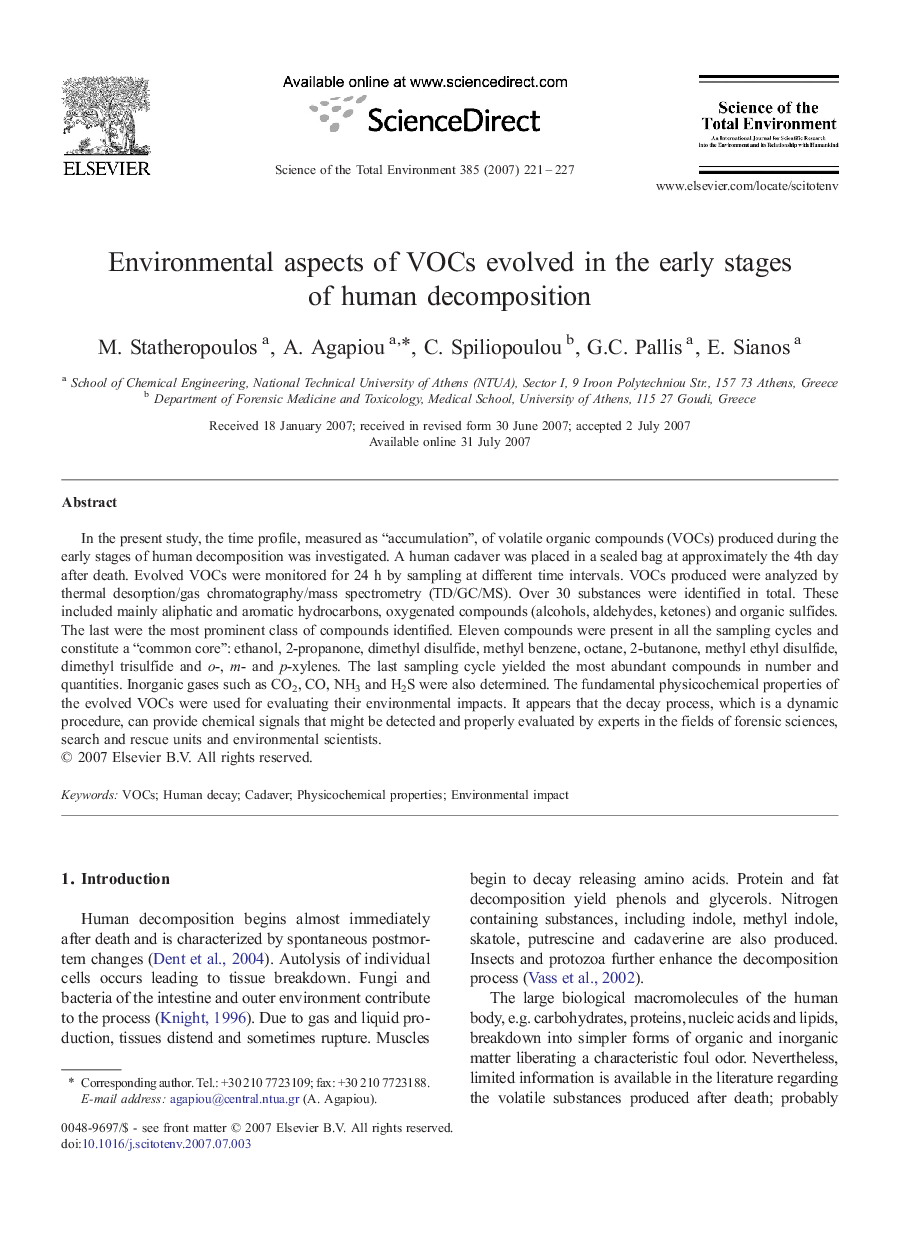| Article ID | Journal | Published Year | Pages | File Type |
|---|---|---|---|---|
| 4432804 | Science of The Total Environment | 2007 | 7 Pages |
In the present study, the time profile, measured as “accumulation”, of volatile organic compounds (VOCs) produced during the early stages of human decomposition was investigated. A human cadaver was placed in a sealed bag at approximately the 4th day after death. Evolved VOCs were monitored for 24 h by sampling at different time intervals. VOCs produced were analyzed by thermal desorption/gas chromatography/mass spectrometry (TD/GC/MS). Over 30 substances were identified in total. These included mainly aliphatic and aromatic hydrocarbons, oxygenated compounds (alcohols, aldehydes, ketones) and organic sulfides. The last were the most prominent class of compounds identified. Eleven compounds were present in all the sampling cycles and constitute a “common core”: ethanol, 2-propanone, dimethyl disulfide, methyl benzene, octane, 2-butanone, methyl ethyl disulfide, dimethyl trisulfide and o-, m- and p-xylenes. The last sampling cycle yielded the most abundant compounds in number and quantities. Inorganic gases such as CO2, CO, NH3 and H2S were also determined. The fundamental physicochemical properties of the evolved VOCs were used for evaluating their environmental impacts. It appears that the decay process, which is a dynamic procedure, can provide chemical signals that might be detected and properly evaluated by experts in the fields of forensic sciences, search and rescue units and environmental scientists.
